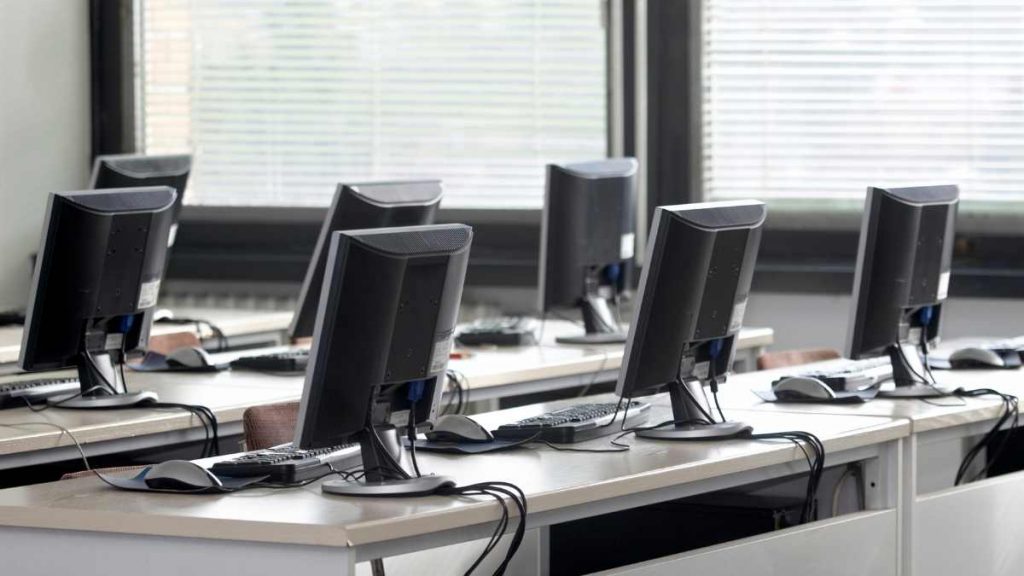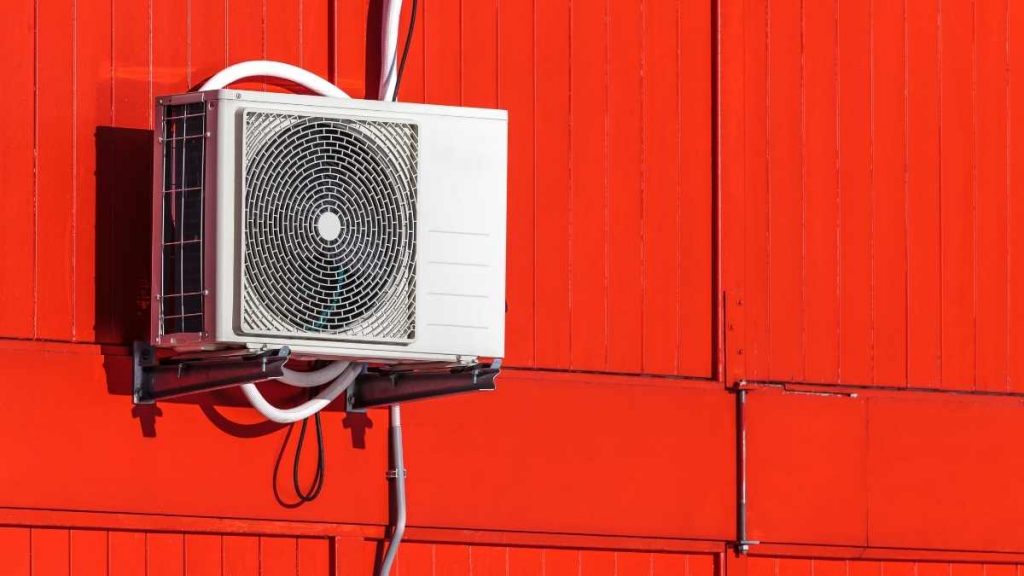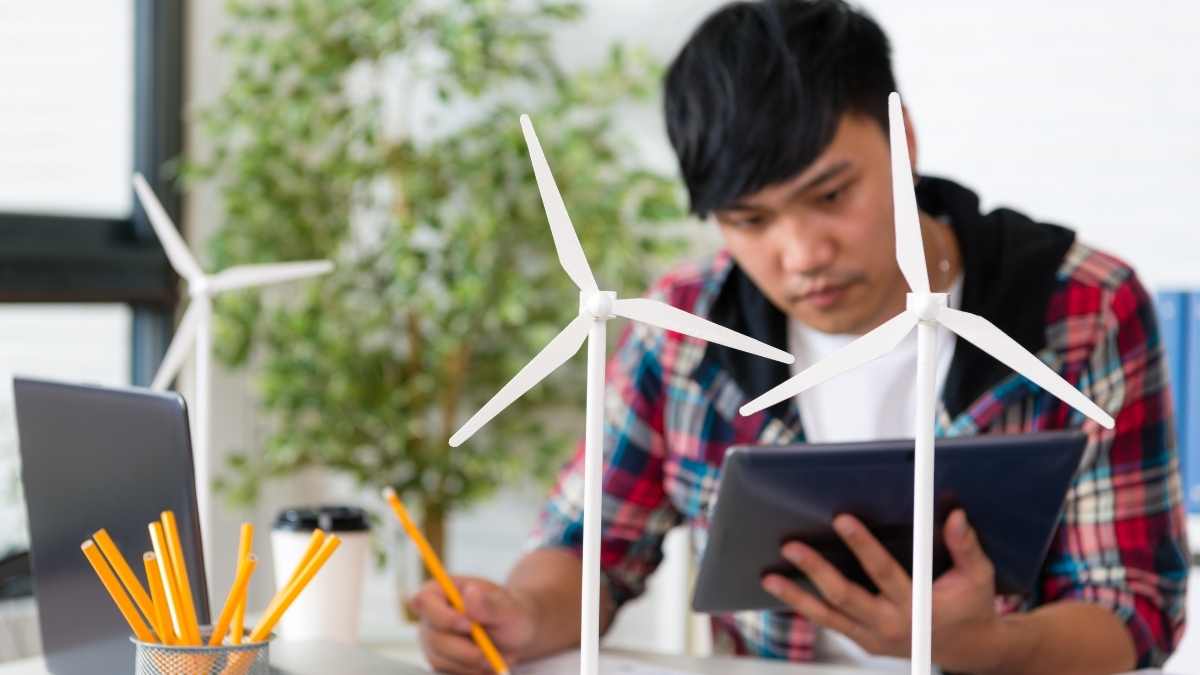The world needs you to be more energy efficient! At home and in your workplace.
Conserving energy in your workplace can reap significant benefits. Not just for your plant but for your finances too.
Let’s look at 8 key improvements you can make in your workplace to be more energy efficient.
How to Conserve Energy in the Workplace

Often, people are so busy with work that they forget to conserve energy. For example, it is typical for an employee to be in the office from 9 am-8 pm but not realize how much energy they have wasted and the impact it has on the environment.
What’s worse is when you frequently run behind and find yourself able to stay up long into the night.
Here are a few tips to improve your energy conservation in the workplace:
Compression and Energy-Efficient Lighting
The 50% of the energy bill from lighting is what you need to be concerned about. Therefore, we should do things to cut down on lighting. Ideas such as replacing the bulbs with compact fluorescent ones or installing timers to turn lights off automatically are good places to start. These are energy-saving ideas.
Here are some tips to reduce lighting in the office:
-

Fashionably Green and On-The-Go
£16.50 Select options This product has multiple variants. The options may be chosen on the product page -

Reusable and Ready Eco-Friendly Tote Bag
£16.50 Add to cart
- Avoid using fluorescent lights or LED bulbs, which are more efficient than incandescent ones.
- Switch off the lights when you leave the office.
- Install timers to turn off lights automatically.
- Try to work in the evening even if you don’t like it.
- Clean bulbs and lamps regularly.
- Use shades to reduce glare.
- Install a system to control the lighting and HVAC units automatically.
- Make sure all the light and air vents are being used.
- If possible, take advantage of natural lighting and turn off infrared lights.
- Choose light bulbs with energy efficiency.
Computers & Electrical Equipment

You can save electric energy in the office if you change to a more efficient computer system. For example, if you have an old IBM-compatible PC, you need to use the newer Windows operating system, which is much more efficient. Here are some tips to avoid overloading your electrical equipment:
- Always unplug items that aren’t currently being used. Unplugging your printer is a significant first step.
- Ensure your desktop computer is plugged directly into the wall, with no extension cords or surge protectors.
- Don’t plug your laptop into an electrical outlet while using the battery.
- Try to use your laptop battery more.
- Don’t leave a computer powered up if you won’t use it for more than a few minutes.
- Use an energy-efficient desktop computer, such as those with sleep and hibernate modes.
- Choose an efficient printer. Look at the labels on the printers and match them with their Energy Star ratings.
Window Cleaning and Curtains
If you don’t clean your windows, energy-efficient curtains will help stop the heat from escaping through them. Here are some tips to reduce heat loss:
- Avoid using curtains that are too heavy or thick.
- Don’t leave windows open when the sun is shining.
- Cover sunrooms.
- Install blinds and shades/curtains to improve your privacy.
- Turn off any fans, heaters, and appliances you’re not using and use energy-efficient ones.
- Make sure that you have adequate ventilation in your office to prevent overheating from occurring in the first place.
Heating and Cooling Energy Saving Idea

Heating and cooling consume about 40% of all our energy. It is the most important thing we have to deal with because it is so demanding. Some tips that can help you conserve energy include:
- Try to keep your office comfortable by adjusting the temperature.
- Avoid turning on the heat or air conditioner when they are not needed.
- Keep the fan or air conditioner in a low and comfortable setting.
- Repair the ventilation of your office if it is open to the outside.
- Use a programmable thermostat to adjust the temperature to be comfortable for everyone in your office.
- Install an energy-efficient heat pump system that saves energy.
- Ensure the outside air is as dry as possible to warm up or cool down.
- If you don’t need heat or air conditioning, close the window and use it only when you need it.
- If you have an open kitchen, try to use a vent hood that attaches directly to your stove rather than a ducted system.
Water-Saving Idea in the Workplace
If you work in a company that uses water for the bathroom and kitchen excessively, you need to save water because it is a limited resource that is getting scarce. It will benefit the environment and the company to conserve water as much as possible. Here are some additional tips to reduce water usage:
- Take shorter showers and wash with warm water without wasting water.
- Buy a low-flow showerhead, and use it when you are taking a shower.
- Put a bucket in the shower and use it to collect the water you will use that day instead of letting it escape.
- When washing dishes, rinse them with cold water before using warm or hot water.
- Use a high-efficiency washer, which can save water.
- Fix a leak in your office if you can find one.
Transportation
Transportation is one of the significant sources of energy consumption, burning nearly 50% of gas daily to get to an office. Whether you use public transportation, carpooling, or biking, there are some things to consider to save energy:
- Try carpooling with other people from the office.
- Bike instead of driving your car.
- Use public transportation wherever possible and walk if you can.
- Always fill up your gas tank before it gets too low, and check the oil level in your car.
- Buy a hybrid vehicle for everyday use if you have one available at your workplace or nearby.
- Avoid idling time when possible; turn off the engine if it is not using the wheel.
Paper Usage & Paper Recycling
Paper usage is a significant source of energy consumption.
Here are some tips on how to reduce paper usage.
- Get all text documents typed in Word or email before printing and sending them text messages or emails.
- Use photocopiers instead of printers to save energy and paper use.
- Ask your mail service to send documents as an email instead of hard copies.
- Use the Scan to email feature, which will only take up 1% of the paper for printing.
- Recycle Paper. All paper is recyclable, and it is always best to ask your mail service to recycle the paper they send you to keep it out of landfills and away from energy usage.
Energy Audit
Now you have done some of the energy-saving steps, it’s time for an energy audit! It is essential to help you save energy.
Here are some tips for doing an energy audit:
- Look around your workplace and see which areas are the most wasteful.
- Take note of which areas are the least efficient.
- Appraise the costs of doing energy audits and see if the savings will still cover the cost.
- An energy audit can help save money now and in the long run.
- An energy audit will also show you where to improve your current site.
- Have you completed an audit in your entire workplace for better results?
Conclusion
Energy-saving at work will help to reduce your carbon footprint. A vital stance in today’s world.
Please take action with these energy-saving tips for the sake of our planet.
Good luck!

